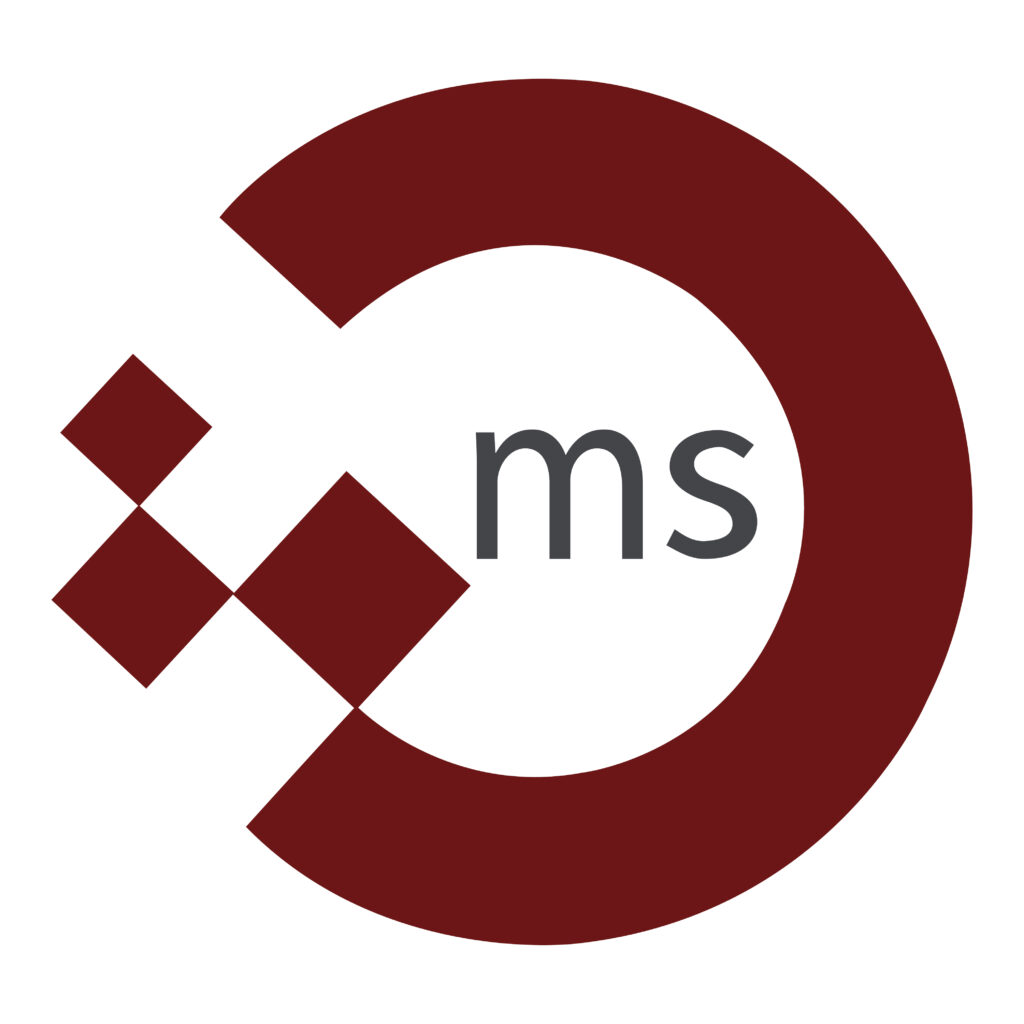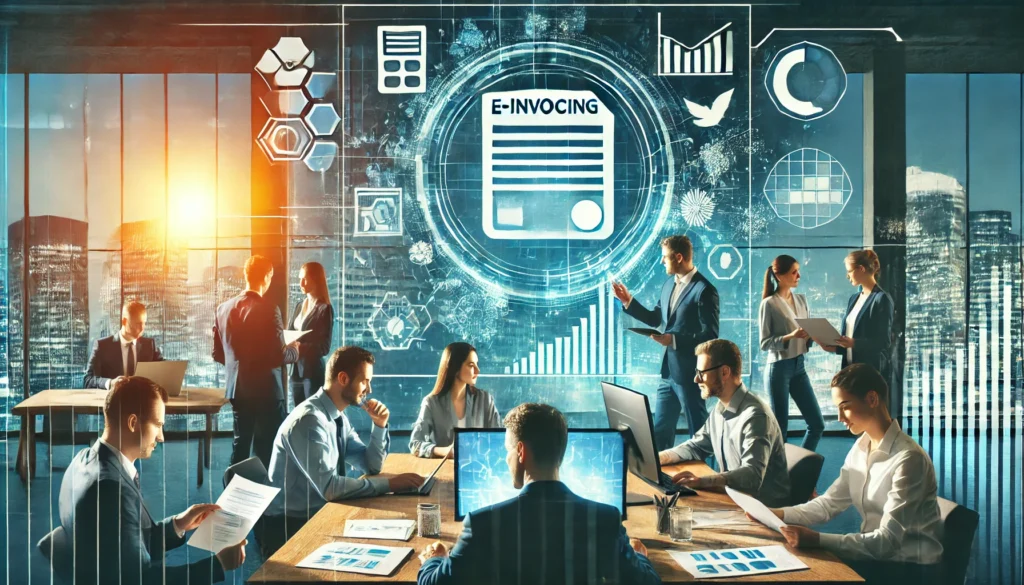
Interim CIO: Dr. Claus Michael Sattler
Increase efficiency, reduce costs: the advantages of e-invoicing for SMEs

As the managing director of a medium-sized company, I am constantly on the lookout for ways to optimize our processes and strengthen our competitiveness. The introduction of eInvoicing has proven to be a game changer. In this article, I would like to highlight the many benefits of eInvoicing for SMEs and show how it not only increases efficiency but also reduces costs.
The revolution in accounting
The eInvoice is more than just a digital image of a paper invoice. It represents a fundamental change in the way companies create, send, receive and process invoices. For SMEs, this change offers enormous opportunities that go far beyond mere digitization.
Advantages of eInvoicing: increased efficiency through automation
One of the most obvious advantages of e-invoicing is the drastic reduction in manual effort. Studies show that processing a paper invoice from receipt to payment takes between 16 and 23 minutes on average. In contrast, an electronic invoice process can reduce this time to just 5 to 7 minutes [source: 5]. This time saving results from the automation of various process steps:
- 1Automatic data capture: eInvoices contain structured data that can be transferred directly into the accounting systems. This eliminates the need for manual data entry and significantly reduces sources of error.
- Accelerated checking and approval processes: Integration with workflow systems means that invoices can be automatically forwarded to the relevant people for checking and approval. This speeds up the entire process and prevents paper invoices from being left on desks.
- Simplified archiving: eInvoices can be archived automatically and in an audit-proof manner, which drastically reduces the effort required for physical filing and subsequent searches for documents.
The efficiency benefits of eInvoicing are particularly important for SMEs, as they often have to work with limited resources. The time freed up can be used for value-adding activities, which increases the productivity of the entire company.
Cost savings through e-invoices
In addition to increasing efficiency, eInvoices offer considerable cost-saving potential:
- Reduce paper and mailing costs: Eliminating paper invoices eliminates costs for printing, postage and packaging. For companies that send a large number of invoices, these savings can be considerable.
- Reduction of process costs: Automation significantly reduces the costs per processed invoice. It is estimated that process costs can be reduced by up to 60-80% [source: 4].
- Minimizing error costs: Automatic data capture and processing reduces human error, which can often lead to costly corrections and delays.
- Optimization of working capital: faster processing times allow invoices to be paid earlier, which leads to an improvement in cash flow. Companies can also benefit more from discounts and other payment advantages.
These cost savings are particularly important for SMEs, as they contribute directly to improving competitiveness.
Improved transparency and control
An often underestimated advantage of e-invoicing is the increased transparency in the invoicing process. Thanks to digital processing, companies have an overview of the status of each invoice at all times [source: 6]. This enables:
- Better liquidity planning: The real-time availability of information on open and paid invoices enables financial management to plan more precisely.
- Early error detection: inconsistencies or problems can be identified and rectified more quickly.
- Simplified reporting: The digital data enables detailed analyses and reports that can be used for strategic decisions.
This improved transparency is particularly valuable for medium-sized companies, which often have to react to market changes with agility.
Compliance and legal certainty
The advantages of eInvoicing also extend to the area of compliance:
- Compliance with legal requirements: eInvoices fulfill all legal requirements, including the requirements for storage and archiving.
- Improved traceability: Every step in the invoicing process is digitally documented, which increases traceability for audits and checks.
- Standardization: The use of standardized formats such as XRechnung or ZUGFeRD facilitates the exchange with business partners and authorities [source: 1].
For medium-sized companies, which often do not have large legal departments, this automatic compliance support offers a considerable advantage.
Environmental friendliness as a side effect
One advantage of the eInvoice that should not be underestimated is its contribution to sustainability. By dispensing with paper, printing and physical transportation, companies make an active contribution to environmental protection. This can not only improve the company’s image, but also lead to cost savings through reduced resource usage.
Challenges during implementation
Despite the numerous advantages of eInvoicing, SMEs face a number of challenges when introducing it:
- Technical integration: The implementation of e-invoicing systems often requires adjustments to the existing IT infrastructure. It is important to choose solutions that can be seamlessly integrated into existing systems [source: 3].
- Employee acceptance: The switch to electronic processes can meet with resistance from employees. Training and clear communication of the benefits are crucial here.
- Investment costs: The initial cost of implementation can be a hurdle. It is important to consider this investment as a long-term strategy to save costs and increase efficiency.
- Data security: The security of electronic data must be guaranteed. This requires robust IT security measures and possibly cooperation with trustworthy service providers.
Strategies for successful implementation
To take full advantage of eInvoicing, I recommend the following strategies:
- Gradual introduction: Start with a pilot project in one department or with selected business partners before rolling out eInvoicing company-wide.
- Choosing the right software: When selecting an e-invoicing solution, pay attention to user-friendliness, scalability and integration capability with existing systems [source: 1].
- Training and change management: Invest in comprehensive training for your employees and communicate the benefits of eInvoicing clearly.
- Collaboration with business partners: Work closely with your customers and suppliers to ensure a smooth transition.
- Continuous optimization: View the introduction of eInvoicing as an ongoing process. Collect feedback and continuously optimize the processes.
Future prospects
The benefits of eInvoicing will only increase in the future. As digitalization progresses and new technologies such as artificial intelligence and blockchain are developed, there are further opportunities for process optimization and data usage.
For SMEs, early adoption of eInvoicing offers the chance to position themselves as innovative and forward-looking players. The experience gained and efficiency gains can serve as a springboard for further digitalization initiatives.
Conclusion: eInvoice as a competitive advantage
The benefits of eInvoicing for SMEs are diverse and far-reaching. From increased efficiency and cost savings to improved transparency and compliance, eInvoicing offers enormous potential. Despite initial challenges during implementation, the long-term benefits clearly outweigh the risks.
As the managing director of a medium-sized company, I see eInvoicing not only as a technological necessity, but also as a strategic opportunity. It enables us to optimize our processes, use our resources more efficiently and prepare ourselves for the future. In an increasingly digitalized business world, the successful implementation of eInvoicing is becoming a decisive competitive advantage.
Taking advantage of eInvoicing means proactively shaping the future of your own company. It is an investment in efficiency, sustainability and future viability – an investment that more than pays off for SMEs.
Sources
- https://www.it-zoom.de/mittelstand/e/so-bereitet-sich-der-mittelstand-auf-die-e-rechnung-vor-34777/
- https://www.easybill.de/blog/effizienzsteigerung-durch-e-rechnungen-warum-ihr-unternehmen-nicht-laenger-auf-papier-setzen-sollte
- https://www.weko.de/news/wie-e-rechnungen-den-mittelstand-verandern/
- https://www.foerdermittel-deutschland.de/e-rechnung/
- https://de.eas-mag.digital/der-mittelstand-und-die-e-rechnung-liebe-auf-den-zweiten-blick/
- https://www.n2f.com/blog/de/e-rechnung-wie-sich-unternehmen-optimal-auf-die-reform-vorbereiten/
- https://www.troi.de/blog/die-e-rechnung-kommt-so-sind-unternehmen-bestens-vorbereitet/
- https://finanzensteuern.de/effiziente-einfuehrung-der-e-rechnung-praktische-leitlinien-fuer-unternehmen/
- https://www.acconsis.de/e-rechnung-ab-2025-laestige-pflicht-oder-effizienzbooster/
- Image: ChatGPT